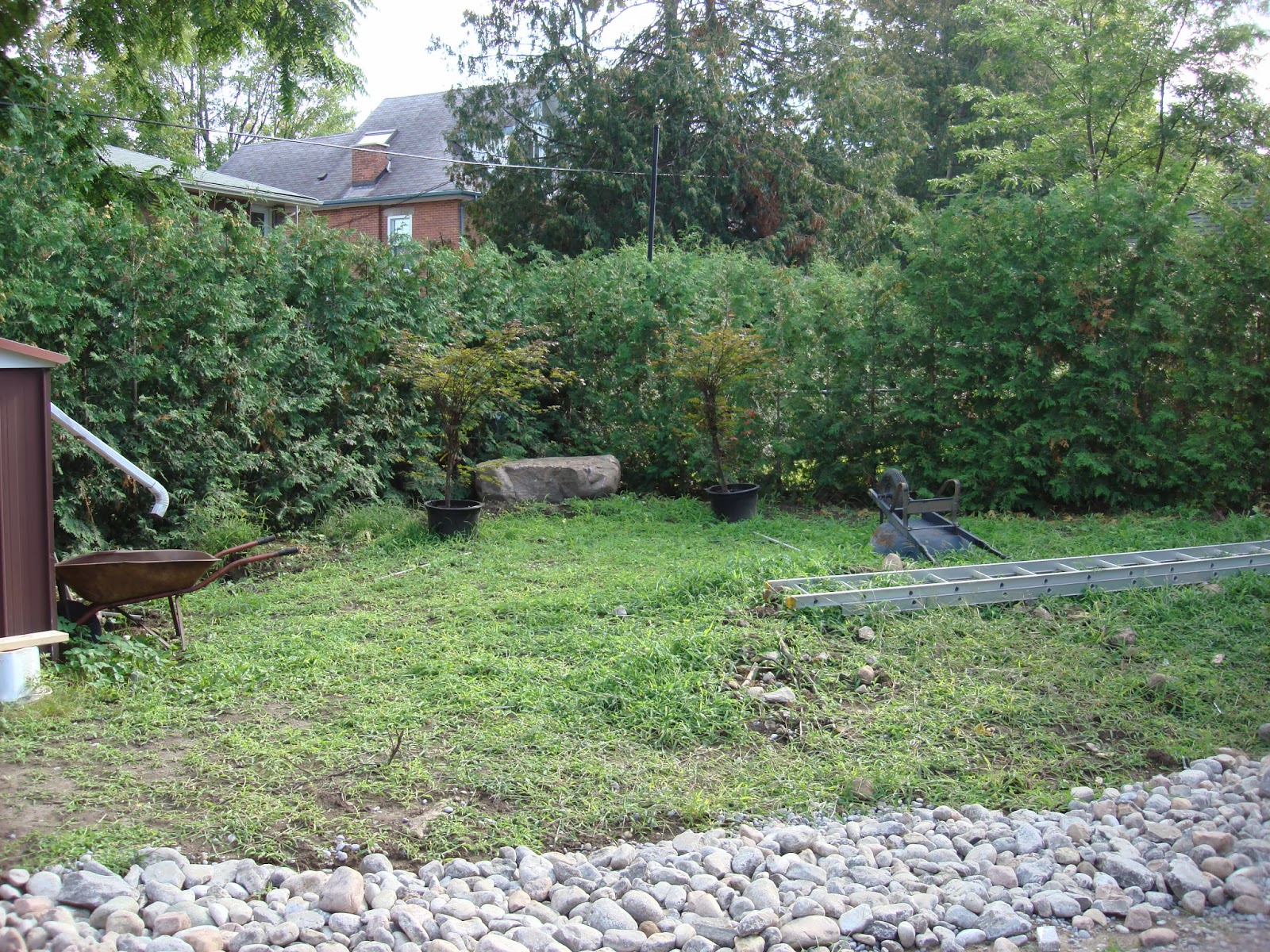So, that first summer, I found two lovely ones - “Acer Emperor”- at the bargain price of $49 each - they are usually over a hundred dollars each. They stood
about 6 feet tall, with dark red leaves and green undersides. I chose two that seemed to bend gracefully toward each other and the boys helped plant them - one on either side of the ‘pathway’ to the Love Rock.
I decided to put a large ‘Endless Summer’ Hydrangea on each side of the Love Rock and then a ‘Claudie’ which is a bit smaller and more spreading, with the ‘Nikko Blue” still smaller but bushy too - so the garden would be full of lush green foliage with lovely blue flowers.

All this gardening and no roses. The black walnut and roses do not get along. However, I was determined and read that as long as plants that are sensitive are not either under the drip-line of the branches, nor near enough that the roots could touch, they should be fine.
Before we get to the new rose bed, here is this garden the following summer.
But alas, not long after this was taken, my beautiful Endless Summer Hydrangeas started looking pale. The leaves became a paler- almost yellow green and I discovered that I had not researched the sensitivities of the Black Walnut and its victims well enough. I did learn, that although there is a lot of information on the internet, I need to read all of it.... or at least enough that my initial findings are legitimate.
There are many things that make gardens grow, or not grow. Sometimes we try to grow things that will not do well under our particular circumstances and in this case, Hydrangeas do not like, nor will they tolerate the juglone of the Black Walnut.
I hastily moved all the Hydrangeas up to the side of the house... far away from the tree they suffered under.... and as of now, they are much happier and back to their crisp deep green leaves, but it took that summer and the next - and lots of compost and love to make them stop pouting.
Good lesson here...research, ask, research, read, research, ask and research again. Most of the university websites, or those attached to botanical gardens will have more documented research than some personal ones, but the personal ones, have stories by real gardeners who may have time to baby one plant over the hundreds of those in test gardens. So read them all, and make your decisions based on the accumulated info you read.
And keep good notes if you are trying something new. You may be able to teach someone else what you have learned. Share your stories; successes and failures.


No comments:
Post a Comment